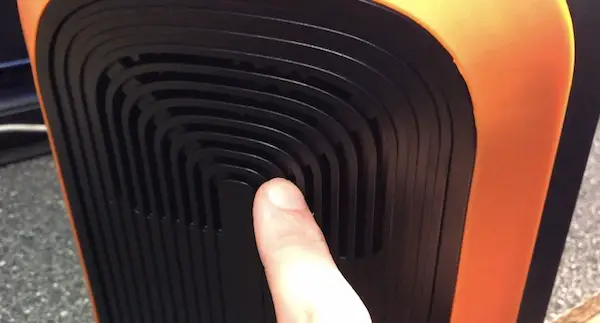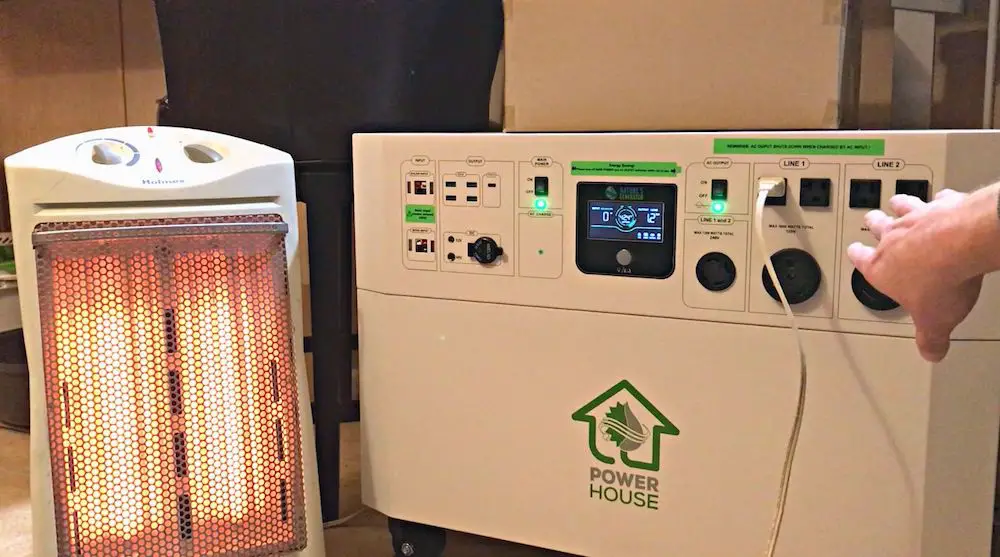Solar generators have become a popular alternative for power supply, particularly in outdoor settings, emergency situations, and for off-grid living.
These portable and eco-friendly power stations work by converting energy from the sun into electricity, which can be stored in a battery for later use. However, at times, you may find yourself in a situation where you need to power a device while the generator is charging.
Most solar generators can be used while charging. While the generator’s panels are exposed to sunlight and actively charging its internal battery, it can simultaneously provide electricity to connected devices. This makes solar generators versatile and practical for off-grid or emergency situations where a continuous power supply is required.
However, there are a few things to keep in mind to ensure safe and efficient use.
Can you use a solar generator while it’s charging?

Many solar generators are designed to be used while they’re charging, which allows for continuous power supply even when the battery is low. However, some models don’t have this feature, so it’s important to check the manufacturer’s instructions before attempting to use the generator while it’s still charging.
Key Tip: Your instruction manual may refer to this feature as “pass-through charging”, so be on the lookout for this term.
There are also models that can be used while charging but with input and/or output limitations. Take my Nature’s Generator Powerhouse, for example. It can be recharged from solar panels and wind turbines while still maintaining the full functionality of its output ports. However, you can’t use its AC ports when recharging it with the wall charger.
Another example can be found in the smaller Rockpals 500. When recharging from any method, you can only use its DC and USB outputs. Its two AC outputs cannot be used when charging it up (source , pg. 10).
, pg. 10).
If your particular model is capable of simultaneous charge/discharge, it’s important to note that the charging time may be longer if you’re using the generator while it’s charging. This is because the battery is simultaneously powering your devices and charging from the solar panels.
Depending on the size and capacity of the solar generator and the amount of sunlight available, charging times can range from a few hours to a full day or more.
Can you use a Jackery solar generator while charging it?

Yes, you can use a Jackery solar generator while charging it. However, it’s recommended to avoid using high-wattage appliances while it’s charging to avoid damaging the battery and/or reducing its lifespan.
For example, the Jackery Explorer 240 manual states the following:
“Q: Can the Explorer 240 be charged while using?
A: Yes, Explorer 240 supports pass-through charging. But we don’t suggest, it will cause damage to battery life.”
– FAQ section of Explorer 240 manual (pg. 13)
The same is true for both the Jackery Explorer 1000 and Explorer 1500, where the exact same answer is present within their manuals on page 14 (1000 manual ; 1500 manual
; 1500 manual ).
).
When it comes to the Explorer 2000, the manual includes more specifics on its capabilities:
“Q: Can I charge the Jackery Explorer 2000 Pro while a device is plugged in?
A: Yes, you can. When charged with AC input, it supports a maximum power output of 1800W. When
– Jackery Explorer 2000 manual (pg. 13)
charged with AC input + DC input ( i.e. solar charging or car charging) simultaneously – it supports a
maximum power output of 1800W. When charged with DC input (i.e. solar charging or car charging), it
supports a maximum power output of 2200W.”
Can you solar charge a Bluetti while using it?
Yes, it’s possible to solar charge a Bluetti solar generator while using it. However, according to Bluetti’s support center FAQs, they don’t recommend doing this since it affects the longevity of the battery.
“Q: Does Bluettipower portable power station support charging and discharge simultaneously?
A: Sure. However, in order to better protect the cycle life of the battery, it is not recommended to charge and discharge the battery at the same time.”
– Bluetti Support Center FAQs
How is it beneficial to use a solar generator while it’s charging?
This can be particularly beneficial in situations where you need to power your devices or appliances continuously, such as during an extended power outage or while camping or traveling off-grid.
There are two key benefits of utilizing pass-through charging:
1. Continuous power supply
One of the biggest advantages of using a solar generator while it’s charging is that it provides a continuous source of power.
This means that you can use your generator to power your devices and appliances even while it’s charging, which can be particularly useful during extended power outages or when you’re in a remote location with limited access to electricity.
2. Reduced downtime
By using a solar generator while it’s charging, you can reduce downtime and ensure that your devices and appliances stay powered up at all times.
This can be particularly important in situations where you need to stay connected to the internet or keep your phone and other devices charged for emergency communication.
What can you anticipate when using a solar generator while it’s charging?

While solar generators offer many benefits, using them during the charging process can raise some questions and concerns. Below are four common issues that you may come across along with tips for maximizing your solar generator’s efficiency and performance.
1. Excessive Heat
Another potential issue when using a solar generator during its charging process is excessive heating.
As the battery charges and discharges, it generates heat, which can cause the internal components of the generator to become hotter than normal.
To prevent excessive heating, it’s important to monitor the temperature of the generator regularly and make sure that it’s not placed in direct sunlight or in a high-temperature environment. Additionally, it’s best to minimize its output wattage by only using your most essential appliances and devices while charging.
2. More Noise
One of the potential side effects of using a solar generator during its charging process is that it may produce more noise than usual.
This is because the generator’s fan may have to work harder to keep the internal components cool while the battery is being charged.
To minimize the noise level, it’s recommended to place the solar generator in a well-ventilated area that is away from living spaces. This will help to reduce the amount of noise that you hear and ensure that the generator operates smoothly and efficiently.
3. Longer charging times
Be aware that using the generator while it’s still charging will likely slow down the charging process, as the generator will be using some of the energy that’s being generated by the solar panels to power your devices.
This means that it may take longer for the battery to fully charge, so it’s important to plan accordingly and allow for extra charging time if you need to use the generator while it’s still charging.
4. Supply may not meet demand
Finally, it’s important to note that when using pass-through charging, the supply of power that’s recharging your battery may not always meet the wattage demands of your devices/appliances.
This can happen when the battery is outputting more watts to your devices than it’s inputting from solar panels. Eventually, the battery will deplete due to either insufficient charging power, excessive output power to your devices and appliances, or a combination of both.
To ensure that you have enough power to meet your needs, it’s recommended to use the solar generator during times when there is ample sunlight and to monitor the power output regularly. Additionally, you may want to consider purchasing a solar generator with a larger battery capacity or investing in additional solar panels to help increase the amount of energy generated.
What appliances can be used with solar generators?
Solar generators are a versatile solution for powering a variety of appliances, making them an excellent choice for camping, outdoor events, and emergency situations.
However, not all appliances are compatible with solar generators. Plus, solar generators come in a wide variety of sizes, which makes some of them more capable than others.
Can a solar generator power a freezer?
The ability of a solar generator to power a freezer depends on the size and power consumption of the freezer as well as the capacity of the solar generator. Most solar generators can power a small freezer with a capacity of up to 5 cubic feet, but larger freezers with higher power consumption may require a larger solar generator or multiple solar panels.
It’s important to check the wattage of the freezer and compare it with the maximum output of the solar generator to determine if it can provide enough power.
Can a solar generator power a mini-fridge?
Yes, a solar generator can power a mini-fridge as long as the fridge’s power consumption is within the solar generator’s capacity. Mini-fridges tend to consume low amounts of power, but they need to run 24/7 in most cases. As with freezers, it’s important to check the wattage of the fridge and compare it with the maximum output of the solar generator to ensure that it can provide enough power.
Having a solar generator with a large battery is also helpful to keep the mini-fridge running continuously throughout the day and night. For more information, I have a post that dives deeper into this topic: 3 Best Solar Generators for Mini-Fridges (w/ Run Times).
Can a solar generator power a space heater?

It depends on the power rating of the space heater and the capacity of the solar generator. Most solar generators are not designed to power high-wattage appliances such as space heaters, which can consume several hundred to over 1,500 watts of power.
However, space heaters can be powered by high-end solar generators with powerful AC inverters. The other important component needed is a large battery to run the heater for long periods of time.
To research these powerful systems, check out my article on this specific topic: Can a Solar Generator Run a Space Heater? (W/ Run Times).
It’s important to check the wattage of the space heater and compare it with the maximum output of the solar generator to determine if it can provide enough power.
Conclusion
In conclusion, while it is possible to use a solar generator while it’s still charging, it’s important to be mindful of the limitations and take appropriate safety precautions.
Always make sure the generator is set up in a safe, dry location and follow all manufacturer’s instructions for proper use and maintenance. Additionally, be sure to use compatible devices and avoid overloading the generator, as this can cause damage to the battery or other components.
By taking the necessary precautions and monitoring the generator regularly, you can help ensure that it operates smoothly and efficiently, providing you with a reliable source of power whenever you need it.
